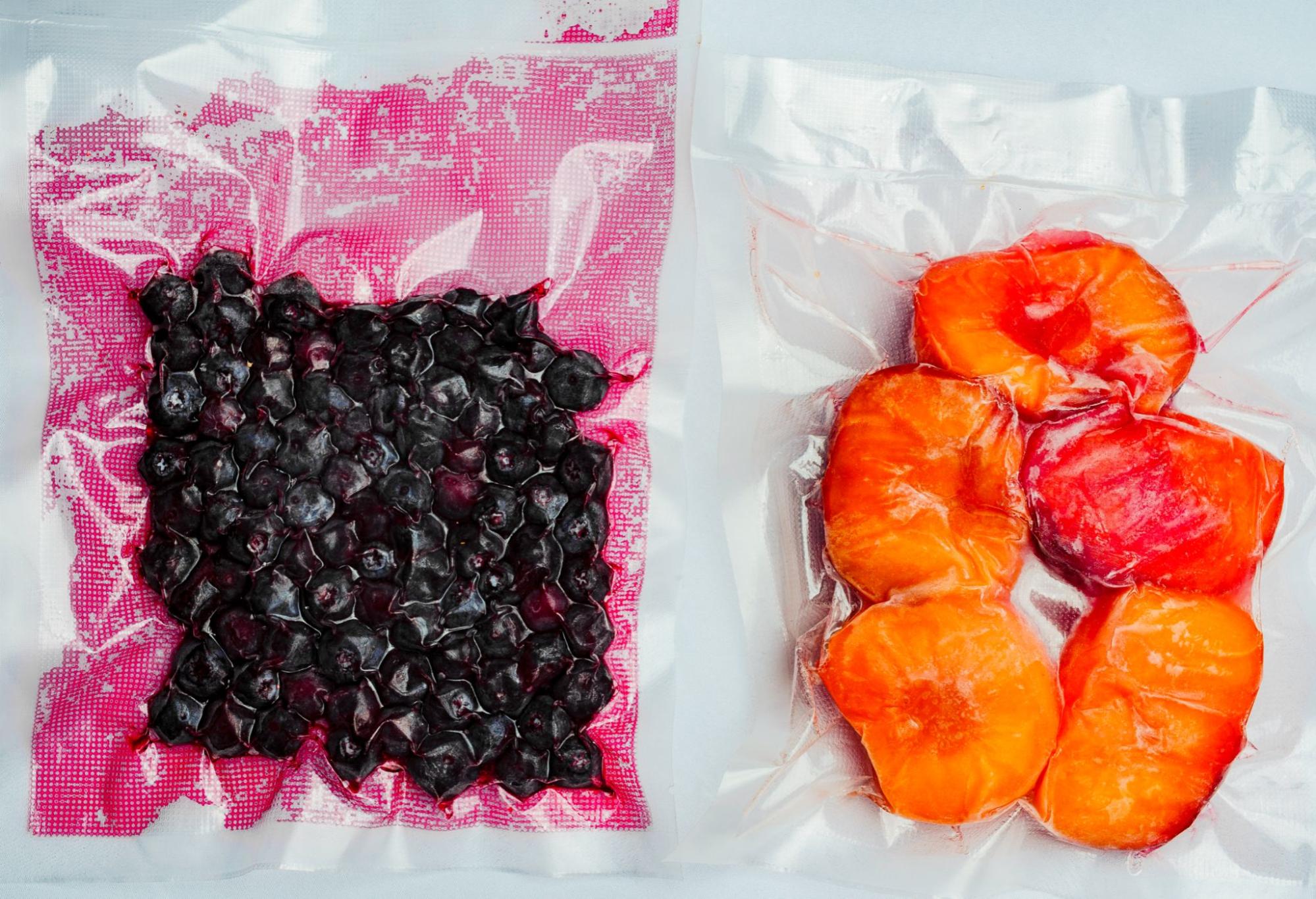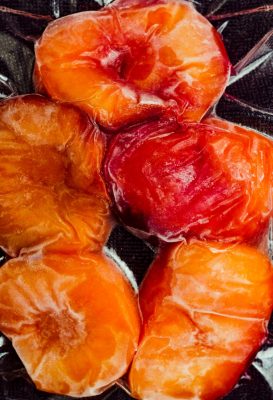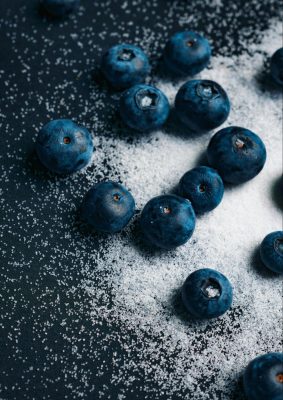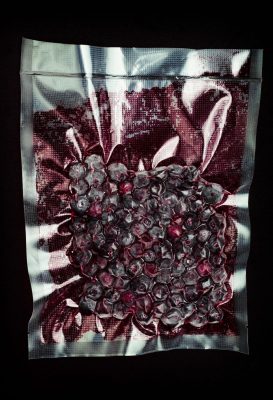
Lacto Fervere: Inviting Bacteria to the Table
Food: Interviews & Features
The first time I popped a lacto-fermented peach into my mouth, my whole world flipped upside down. We all know how a peach tastes, but fermenting it unlocked a new way in which a peach can taste. Sweet, salty, sour, and umami dances around on my palate elevating a simple ingredient beyond its core flavor. This was lacto fermentation, and it has completely added a new dimension to the way we cook in our house today.

The Science of it All:
When it comes to creating your own lacto ferments, understanding the “how” isn’t as important as understanding the “why.” Lacto fermentation is actually a very simple process: You take food, add salt, remove oxygen, control heat and wait a few days for your end results. However, under a microscope it’s an entirely different story. Replicating the results of any fermentation is really where the science comes into play. Learning why bacteria behaves a certain way will give you complete control of the fermenting process while ensuring that you avoid introducing unwanted guests like botulism to the party. For the sake of simplicity, this article will discuss the simplest of bacteria: Lactobacillus.
Lactobacillus are small, rod-shaped bacteria that are found on the skin of fruits, vegetables and even your own hands. When you go to pick up a peach at the local Downtown Farmers Market you are unknowingly mixing your own lacto strains with those already present on the fruit. While the bacteria goes to work mixing and mingling on the skin of the fruit, it’s converting (fermenting) the sugar into lactic acid which then produces a sourness that is the secret behind sour pickles, beer and sauerkraut.
One of lactic acid’s natural characteristics is its ability to tolerate low-pH environments as well as thrive in high-salt and low-oxygen environments. Knowing this gives us the advantage of being able to control which bacteria thrive at our fermentation party and which bacteria will not. One of the main concerns when creating a lacto fermentation is the presence of C. botulinum, the bacteria responsible for botulism. To avoid hosting this sporulating bacteria and others, we introduce salt and remove oxygen. Bacterias like C. botulinum are unable to survive in high-salt, low-pH and low-oxygen environments where Lactobacillus thrives most. By controlling these variables we are able to boost the number of lactos at the party and kill off any other unwanted bacteria who are there to tear it down.
Shopping List:

Now that the technicalities are out of the way, let’s talk shop. To achieve a proper fermentation, you are going to need the following:
- Fruit or vegetables
- Vacuum sealer with bags or a large jar with a lid
- Salt
- Kitchen Scale (preferably one that reads to the .01 gram)
- Patience of a Buddhist monk (optional)
For my recipes I use a vacuum sealer, as I like to ensure my results can be easily replicated time and time again, and I find it easier to store. If you don’t have one, a large glass jar with a lid will do just fine. When using the glass jar method, you will need something to weigh down your fruits or vegetables so they can ferment in their own juices. A Ziploc bag filled with water will do the trick.
Select Your Fermentables:
The next step is fruit or vegetable selection. Here is where you can let your mind go wild. I recommend shopping for any fruits or vegetables from the local Downtown Farmers Market or a market such as Liberty Heights Fresh in Salt Lake City. The main reason for this is that you not only support our local farmers but you also get fermentables that are rich with lactobacillus, as they are not pesticide-treated and outperform the non-organics nine times out of 10 when it comes to quick fermentations. I try to stick with what is in season but if you have a recipe in mind then go with what your gut is telling you. When selecting your fermentables, consider the final result. Berries tend to break down very easily during fermentation while other fruits with stronger skins will hold their form better over the course of time. This doesn’t mean they can’t be done, but you will need to get a little more creative when adding to dishes. To start, I recommend peaches (pitted and halved) and/or blueberries, both of which are currently in season and have amazing uses you can add to a variety of dishes.
To start your fermentation, clean your fruit (not too hard, as you don’t want to rid all bacteria completely) and hands, then weigh your fruit on the scale. Once weighed, calculate 2% of the total weight to obtain the amount of grams of salt you will need to add (Total Weight (grams) x .02 = Salt in grams). Add both the fruit and salt to your vacuum bag or jar, close and shake to combine. Seal the bag to the tightest seal or add your water filled Ziploc bag over the top and close the lid. Sit the bag at room temperature and wait five-to-seven days. Over the next few days, your bag will begin inflating. This is the natural process of fermentation doing its job: The bacteria eats the sugar and poops out carbon dioxide, sometimes trapping the carbon dioxide in the fruit itself for a slightly carbonated end result. Open the bag after two-to-three days, pull out a sample and try it out. Once you get a desired result, you are ready to introduce it to your cooking or re-seal and store in the fridge/freezer for later use.
Transforming a Dish:
When you are ready to use your fermented produce, consider the way these products can be substituted in a dish. With lacto peaches, you can peel the skins off and run them through a dehydrator to turn them into chips to garnish an ice cream or crush them in a mortar and dust over the top of an asparagus risotto to add a similar sweetness and sourness that you would get from a lemon. The leftover juice can be used as a vinaigrette for salads, while the fruit itself can be diced up and mixed into a salsa recipe to add depth and dimension. The possibilities are endless and will forever change the way your tastebuds experience the culinary world.
Try it Out:
If you are feeling ready to take the plunge, let’s start by dipping a toe or better yet, basting an ear of corn into a bath of lacto fermented BBQ sauce. As an American staple, BBQ sauce can be used in a variety of dishes as either a base, a dipping sauce or a rub which makes it the perfect candidate to add fermentables to. Better yet is that it’s relatively easy to make, vegan and gluten-free, making it one of my favorite ingredients to experiment with. If you don’t believe me, try it out for yourself.

Lacto-Blueberry BBQ Sauce:
Ingredients:
– 1 cup lacto-fermented blueberries (fermented for 6 days at room temp)
– 2 chipotle peppers in adobo sauce
– 2 cloves garlic (diced)
– 1 jalapeno (diced)
– 1 red onion (diced)
– 1 cup ketchup
– ½ cup brown sugar
– ½ cup apple cider vinegar
– 2 bay leaves
– 1 tablespoon Akija spice (Trader Joes)
Preparation:
– Sauté onion and garlic in canola oil until translucent.
– Add remaining ingredients and cook down until thickened (~20 minutes).
– Remove from heat to cool for at least 10 minutes.
– Remove bay leaves
– Blend until smooth and strain through a fine mesh strainer, pressing the pulp into the strainer to extract all flavor and residual juices.
– Baste over grilled corn, chicken legs or use as a base for a BBQ chicken pizza with fresh basil.
There and Back Again:
This article was merely meant to cast a small light on the world of lacto fermentation however, the truth is that we are only scratching the surface of the endless possibilities that are out there for you. It is my hope that you will discover the same amount of excitement and wonder that I did after my first fermentation, and you will transfer that same energy and enthusiasm into the next batch and the next. Through trial and error new flavors will begin to emerge as you experiment with your own concoctions testing the limits of what a dish can be. The next time you go to prepare your table for dinner make sure to send an invite to the lactobacillus waiting to elevate your dish and transport your palate to a new dimension.